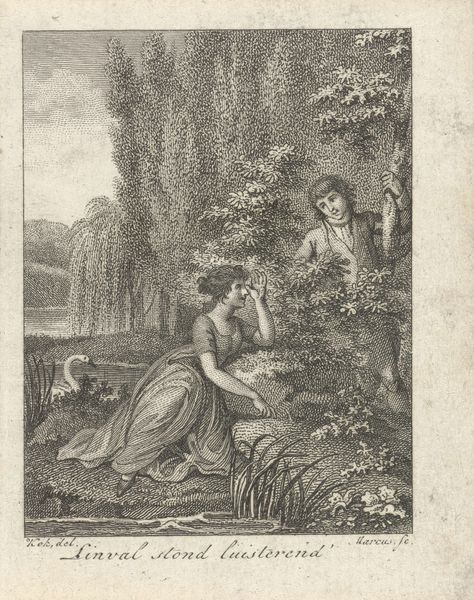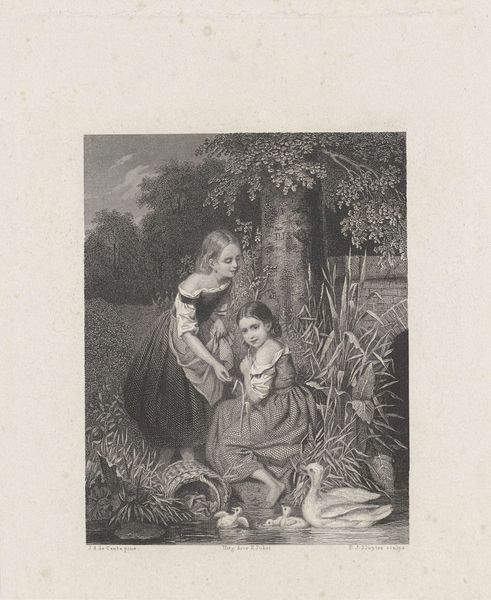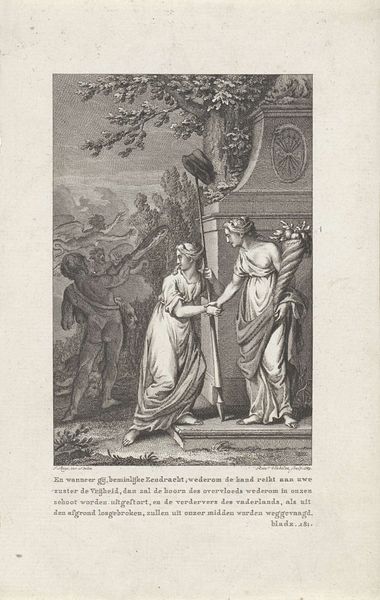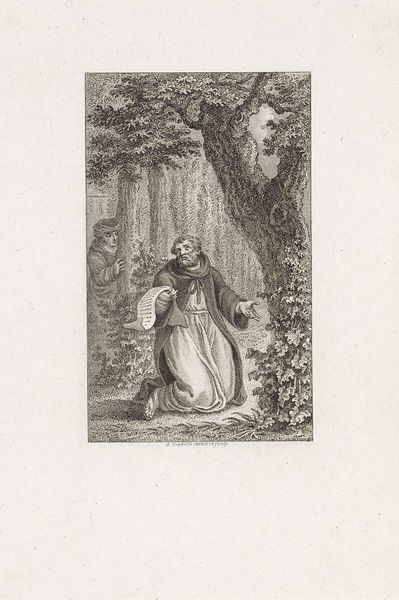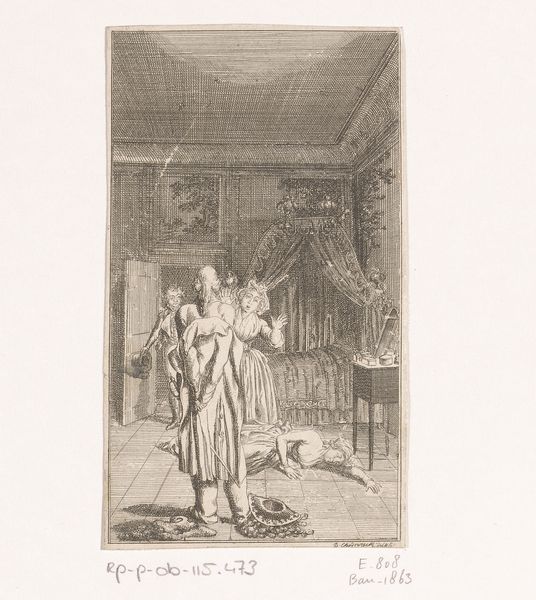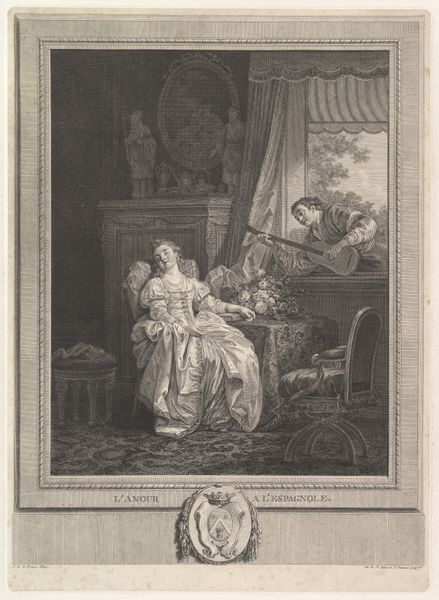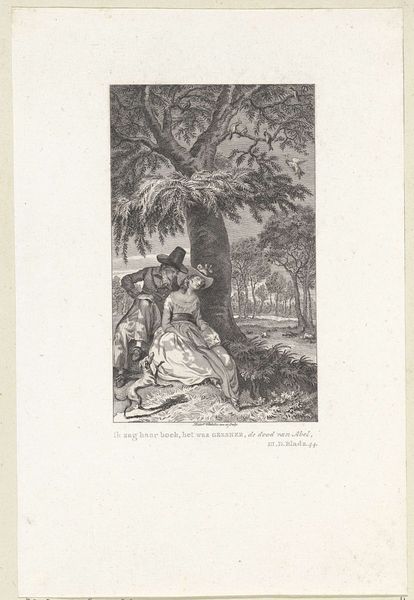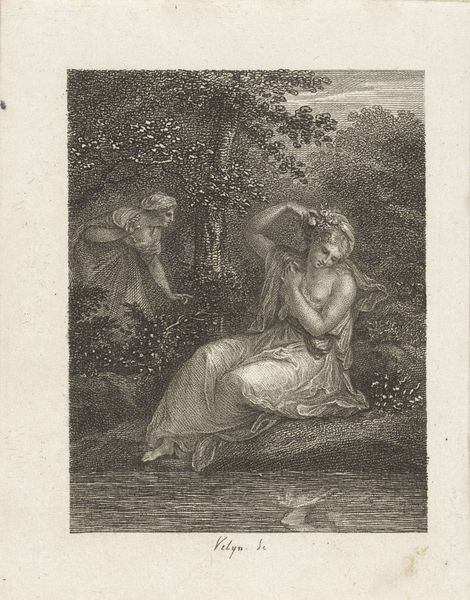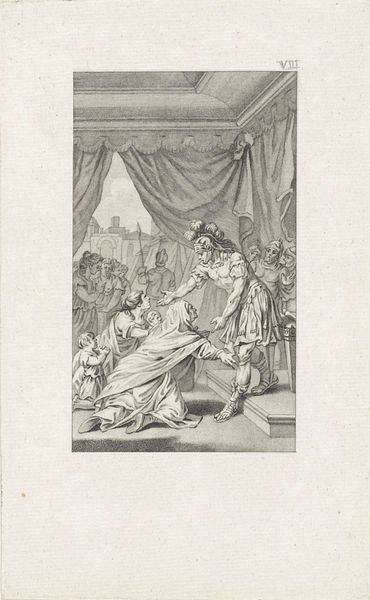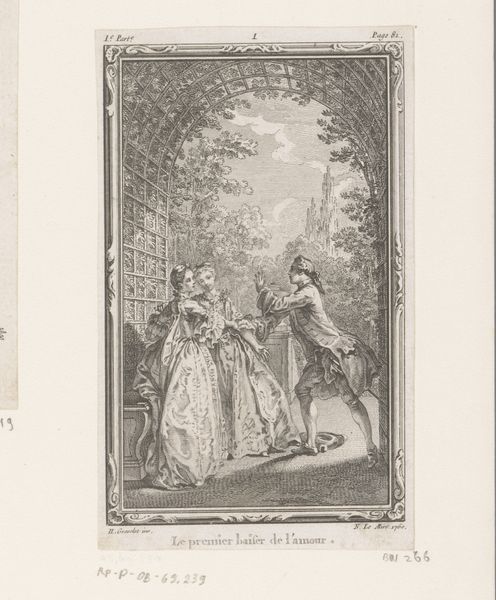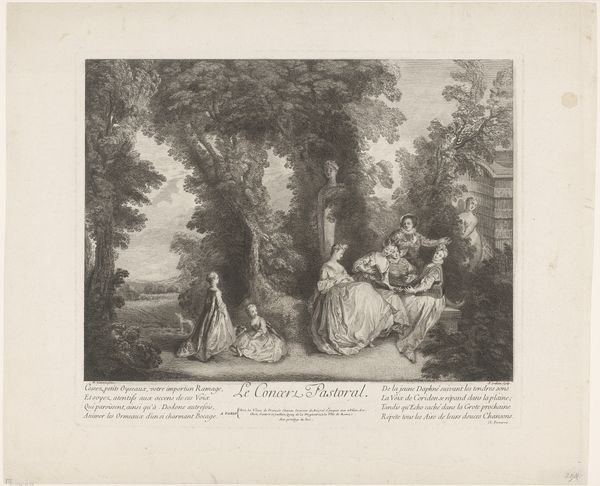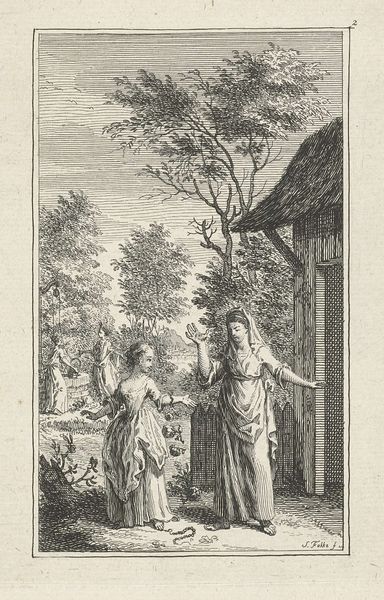
drawing, print, paper, engraving
#
drawing
# print
#
old engraving style
#
landscape
#
figuration
#
paper
#
romanticism
#
genre-painting
#
engraving
Dimensions: height 180 mm, width 110 mm
Copyright: Rijks Museum: Open Domain
Editor: Here we have Abraham Veelwaard's "Two Women in a Garden," an engraving on paper from 1828. I'm immediately struck by the contrast between the standing woman, elegantly dressed, and the kneeling one, who seems to be working. What do you see in this piece? Curator: I'm interested in the labor dynamics at play here, evidenced in the material reality of the scene. Look closely at the contrasting attire—the fabrics, the cut, clearly indicating differing social strata, dictating who can remain idle and who is bound to physical exertion. Notice also the "old engraving style". This indicates a method of reproduction and dissemination – printing allowed for broader access, shaping consumption and societal views on class and leisure. What kind of labor do you think is valued, and for whom, in 1828? Editor: Well, the kneeling woman is actively tending to the garden, but the other woman almost seems to be directing or observing. Was gardening considered labor at that time, or was it more of a hobby for the upper class? Curator: Exactly. The means of production shapes that distinction. Was the garden for sustenance or for aesthetic pleasure? Were these women participating in that labor themselves, or managing laborers beneath them? Moreover, how does the print-making process influence our access and understanding of these social interactions? Editor: That's a great point. Seeing it as a printed image changes things – it becomes less about this specific garden, and more about the dissemination of ideas around class and gender. It does invite you to look a little closer into Dutch society at that time. Curator: Indeed. The material tells a story – not just of flowers and gardens, but of labour, class and distribution, which speaks volumes about 19th-century Dutch society and the artistic means used to represent it. Editor: This piece is more than just a pretty picture of a garden; it's a lens through which to examine the complexities of labor and social class! Curator: Precisely. Next time you are looking at art, think about the materiality of it and how that relates to labor and class, you'll uncover so much more.
Comments
No comments
Be the first to comment and join the conversation on the ultimate creative platform.
